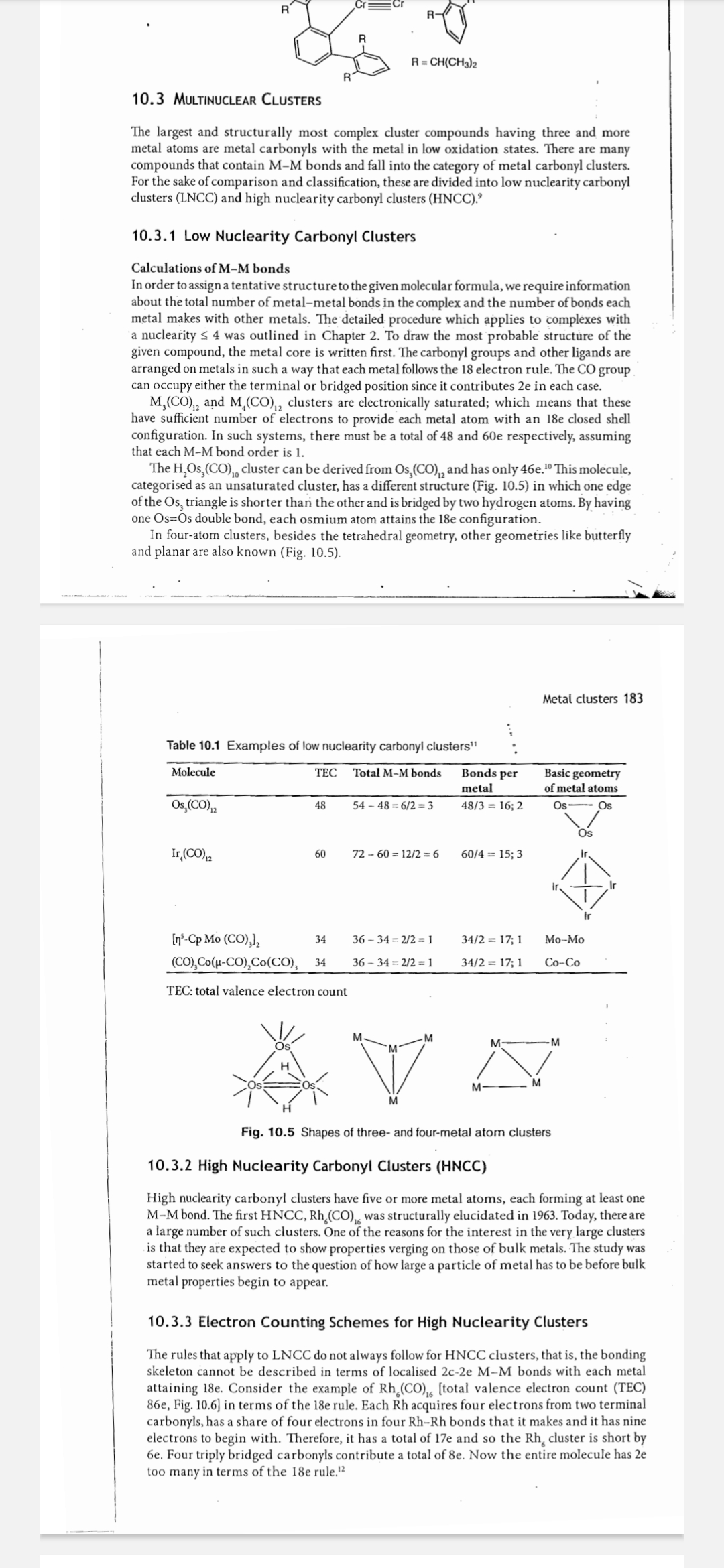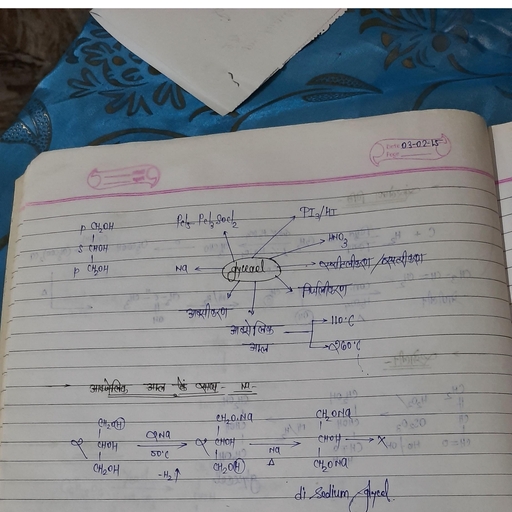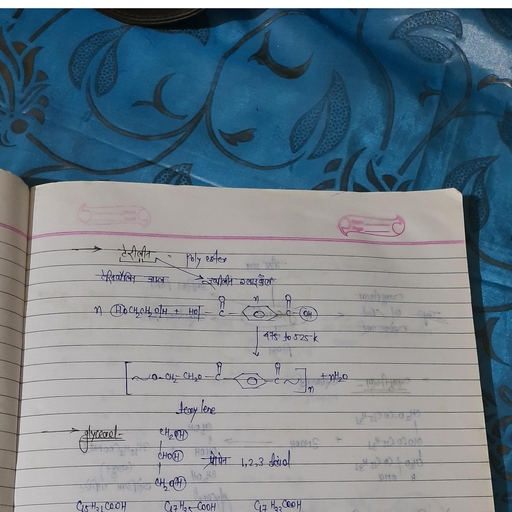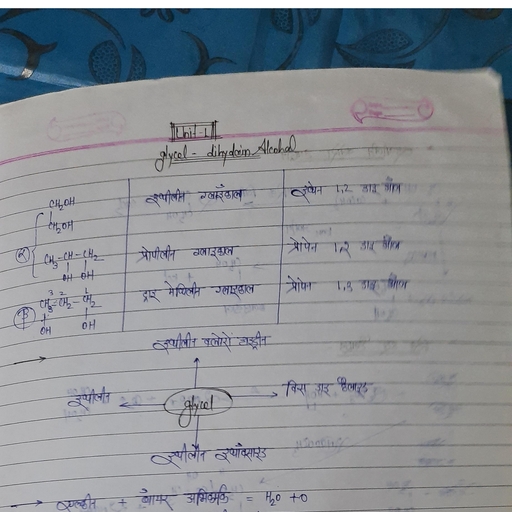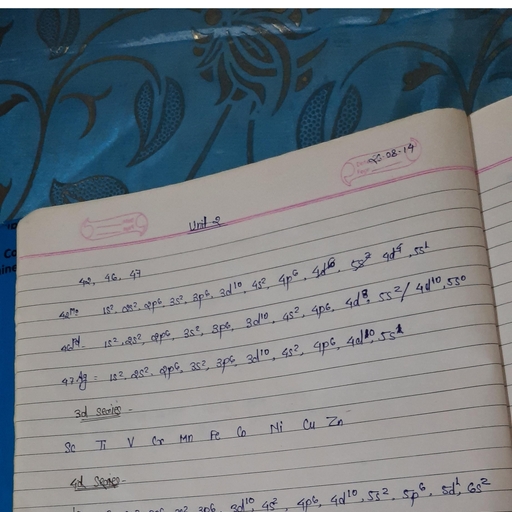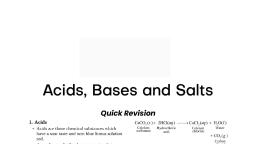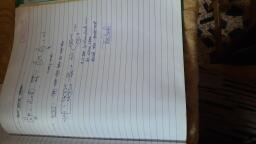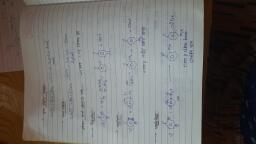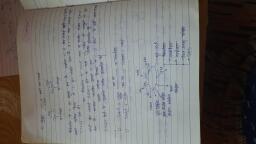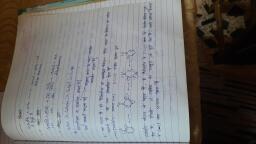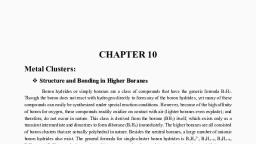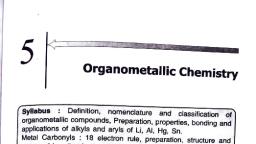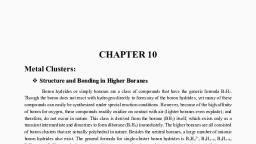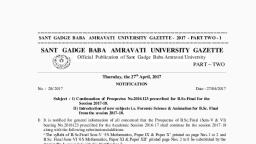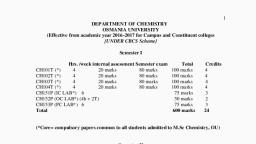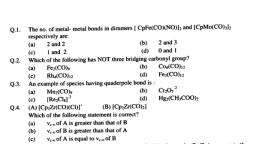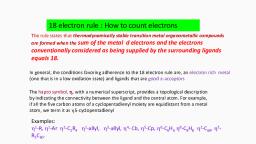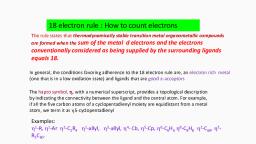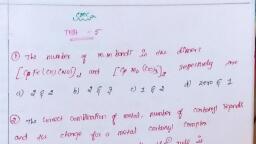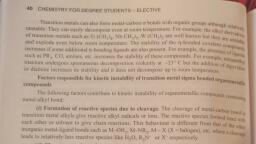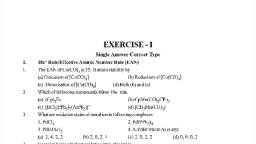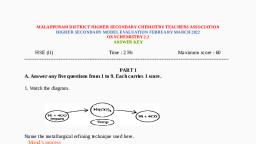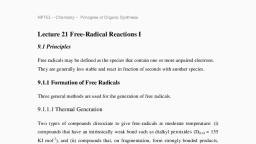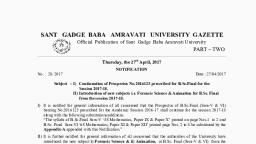Page 1 :
10.3 MuttinucLear CLUSTERS, , ‘The largest and structurally most complex cluster compounds having three and more, metal atoms are metal carbonyls with the metal in low oxidation states. There are many, compounds that contain M-M bonds and fall into the category of metal carbonyl clusters., For the sake of comparison and classification, these are divided into low nuclearity carbonyl, clusters (LNCC) and high nuclearity carbonyl clusters (HNCC)?, , 10.3.1 Low Nuclearity Carbonyl Clusters, , Calculations of M-M bonds, , In order to assign tentative structure to the given molecular formula, we require information, about the total number of metal-metal bonds in the complex and the number of bonds each, metal makes with other metals. The detailed procedure which applies to complexes with, a nuclearity < 4 was outlined in Chapter 2. To draw the most probable structure of the, given compound, the metal core is written first. The carbonyl groups and other ligands are, arranged on metals in such a way that each metal follows the 18 electron rule. The CO group, can occupy either the terminal or bridged position since it contributes 2e in each case., , M,(CO),, and M,(CO),, clusters are electronically saturated; which means that these, have sufficient number of electrons to provide each metal atom with an 18e closed shell, configuration. In such systems, there must be a total of 48 and 60e respectively, assuming, that each M-M bond order is 1., , The H,Os,(CO),, cluster can be derived from Os,(CO),, and has only 46e."° This molecule,, categorised as an unsaturated cluster, has a different structure (Fig. 10.5) in which one edge, of the Os, triangle is shorter than the other and is bridged by two hydrogen atoms. By having, one Os=Os double bond, each osmium atom attains the 18e configuration., , In four-atom clusters, besides the tetrahedral geometry, other geometries like butterfly, and planar are also known (Fig. 10.5)., , —— a . 2 Ne is, , Metal clusters 183, , , , Table 10.1 Examples of low nuclearity carbonyl clusters" 2, Molecule TEC TotalM-Mbonds Bonds per __ Basic geometry, metal of metal atoms, 0s,(CO),, 48 54-48=6/2=3 48/3 = 16;2 Os—— a, Os, Ir,(CO),, 60 72-60=12/2=6 60/4=15;3 Ir,, , {n’-Cp Mo (CO),), 34 -36-34=2/2=1 —34/2=17;1 Mo-Mo, (CO),Co(t-CO),Co(CO), 34 36 - 34=2/2= 31 Co-Co, , , , 34/2 =, , , , , , TEC: total valence electron count, , \ M, , fd Wo SY, , M, , , , , , Fig. 10.5 Shapes of three- and four-metal atom clusters, 10.3.2 High Nuclearity Carbonyl Clusters (HNCC), , High nuclearity carbonyl! clusters have five or more metal atoms, each forming at least one, M-M bond. The first HNCC, Rh,(CO),, was structurally elucidated in 1963. Today, thereare, a large number of such clusters. One of the reasons for the interest in the very large clusters, is that they are expected to show properties verging on those of bulk metals. The study was, started to seek answers to the question of how large a particle of metal has to be before bulk, metal properties begin to appear., , 10.3.3 Electron Counting Schemes for High Nuclearity Clusters, , The rules that apply to LNCC do not always follow for HNCC clusters, that is, the bonding, skeleton cannot be described in terms of localised 2c-2e M~M bonds with each metal, attaining 18e. Consider the example of Rh,(CO),, [total valence electron count (TEC), 86e, Fig. 10.6] in terms of the 18e rule. Each Rh acquires four electrons from two terminal, carbonyls, has a share of four electrons in four Rh-Rh bonds that it makes and it has nine, electrons to begin with. Therefore, it has a total of 17e and so the Rh, cluster is short by, 6e. Four triply bridged carbonyls contribute a total of 8e. Now the entire molecule has 2e, too many in terms of the 18e rule.”
